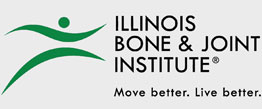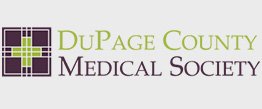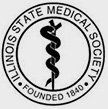Shoulder Arthroscopy
The most common need for a shoulder arthroscopy (or shoulder “scope”) is torn tendons or ligaments/labrum. These conditions are usually a result of an acute injury, but can also occur from overuse or degeneration. “Impingement” is another need for arthroscopy, where shoulder pain is caused by irritation of the tendons in the shoulder by surrounding bony prominences, or by poor posture.
Ligaments are soft tissue structures that connect bone to bone. The shoulder capsule is a type of ligament that completely encircles the shoulder joint and connects the socket of the shoulder to the arm bone. The capsule assists in joint stability, and helps the shoulder to move and function properly. It can become torn from an acute injury, such as a shoulder dislocation. When the capsule is torn, symptoms of instability or recurrent dislocations may occur. The capsule can also be naturally lax in some patients, causing similar instability symptoms, even without a traumatic event of injury. In traumatic cases, the capsule needs to be surgically repaired to prevent the shoulder from continuing to dislocate. In non-traumatic cases, conservative treatment can be attempted first before considering surgery.
Deep to the capsule is the labrum. The labrum is a thick ring of cartilage that deepens the shoulder socket, assisting in joint stability. It also as works with shoulder joint ligaments to anchor the ball of the arm bone in the socket. When the labrum is torn, there is pain with certain movements, in addition to instances of locking, or a sensation that something is getting stuck inside the shoulder joint. Symptoms from most labrum tears can be relieved with conservative treatment, but large tears or tears causing persistent mechanical symptoms may require surgery to repair the tear.
There are additional ligaments that make up the acromioclavicular (AC) joint. These ligaments hold the collar bone in down in proper position to form part of the shoulder joint. Injury to these ligaments is referred to as a “separated shoulder”, and causes the end of the collar bone to become raised, resulting in a noticeable deformity, and pain over the top of the shoulder with reaching up or across. In more severe cases with significant deformity, surgery is needed to bring the collar bone back into position, and restore proper shoulder mechanics.
AC joint osteoarthritis can develop from normal use of the shoulder, and cause the end of the collar bone to rub at its connection to part of the shoulder blade, causing pain with movement and use of the shoulder. In cases where pain is not relieved with conservative treatment, arthroscopy can be considered.
A shoulder arthroscopy is an option for patients with pain, locking, weakness, instability, and/or decreased shoulder motion and function that interferes with normal daily activities and recreational activities. In many situations, conservative treatment including physical therapy and possibly cortisone injections are considered first and relieve most symptoms. However, rotator cuff tears, and ligament/labrum tears do not heal themselves, so an arthroscopy is the most reliable solution for resolving mechanical symptoms, muscular weakness, or instability that does not improve with physical therapy. Surgery is only recommended first for very large tears that result from a traumatic injury.
To learn more about shoulder tendon tears, Click here
A shoulder arthroscopy is a surgical procedure in which a camera is inserted into the shoulder joint through a small portal. There are usually two to three portals about the shoulder that allow the surgeon to visualize the entire shoulder joint. Depending on the procedure, an additional portal or small incision may be necessary. Special instruments are inserted through the same portals as the camera, which allows the surgeon to perform the operation. Arthroscopic shoulder operations include:
- Labrum repair: The torn labrum is reattached to the shoulder socket and secured with anchors or stitches. Remaining unstable flaps of labrum are shaved to stable borders to prevent further tearing. The repair is protected by a use of a sling and movement restrictions. When recovered, pain and mechanical symptoms are relieved, and shoulder function is improved.
- Shoulder capsule repair: Torn capsule is reattached to the rim of the shoulder socket with anchors or stitches. In patients with a lax capsule that is not torn, the capsule can be tightened through the use of stitches. The repair is protected by use of a sling and movement restrictions. When recovered, symptoms of instability are relieved
- AC (acromioclavicular) joint reconstruction: The torn ligaments of the AC joint are reconstructed with suture, or in some cases, a graft. This restores normal positon of the AC joint and proper shoulder mechanics. This is typically done as an open procedure.
- AC joint pain surgery: Through the shoulder scope, the end of the clavicle is shaved down just enough so that it is no longer rubbing against bone, relieving pain. It is a relatively minor procedure, but only recommended after physical therapy or cortisone injections fail to relieve symptoms.





